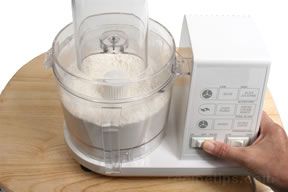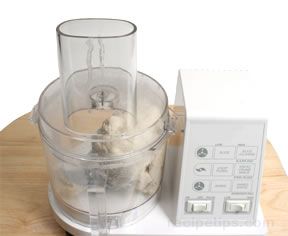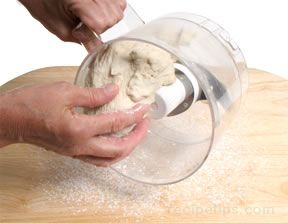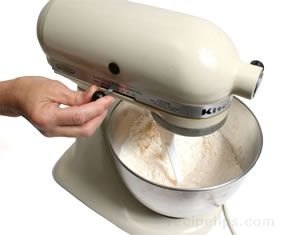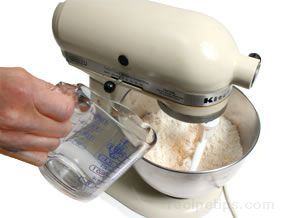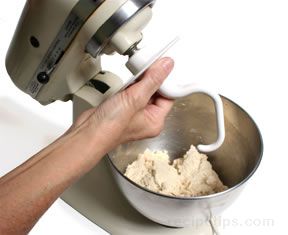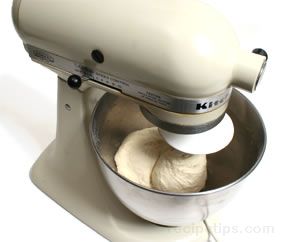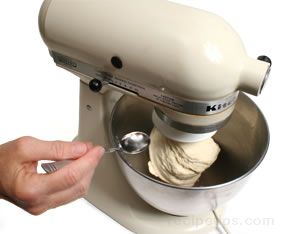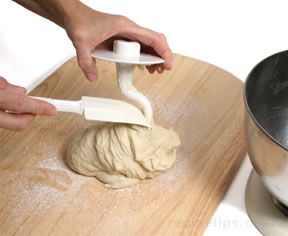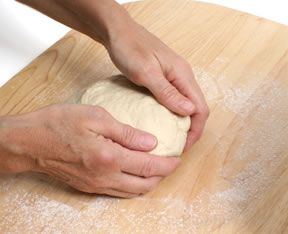Food Processor | Heavy-Duty Mixer
Mixing and Kneading with a Food Processor
| Note: It is usually of no benefit to use a food processor to mix the ingredients for most quick breads. It may be difficult to control the degree in which the ingredients are mixed and over-mixing the ingredients results in a loaf that is heavy and tough. Many quick bread recipes call for the ingredients to be folded together, quickly and gently, until just mixed in order to produce the best results. |
Mixing and Kneading with a Heavy-Duty Electric Mixer
| Note: When making bread with an electric mixer, make sure to use a heavy-duty mixer that comes with a dough hook attachment. Standard kitchen mixers equipped with whisk and/or paddle attachments only, are not designed for preparing heavy bread dough. | |

